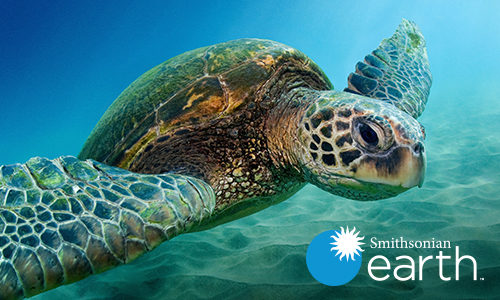
After the launch of Smithsonian Networks' OTT subscription service, Smithsonian Earth, the digital team at Smithsonian Networks established a community for nature and wildlife lovers across the social web who share a passion for learning more about these subjects. The Smithsonian Earth Facebook page serves as our headquarters to unite and grow this audience while fostering discussion around timely and topical issues related to the natural wonders of our world. Our main goals for this community are multifold – primarily, we aim to utilize the content on the page to raise awareness around different species, both animal and plant, with an emphasis on those which are endangered or threatened. The Smithsonian Earth Facebook page also educates consumers on unusual, lesser known animal life, allowing them to discover more about the biodiversity across our planet. The page's content drives consumers looking for more to subscribe to the overall Smithsonian Earth service, which subscription fees automatically include a donation to the Smithsonian Tropical Research Institute to protect whales and the Pacific Ocean, turning knowledge and curiosity into tangible action to help protect our planet's natural resources. Finally, the Smithsonian Earth Facebook serves as a space for passionate nature lovers to discuss, share and connect with each other.
In establishing the Smithsonian Earth Facebook page, we chose to curate content that served an educational and thought-provoking purpose as opposed to pushing out 'click-bait'. We know our audience is savvy enough to understand when they are being marketed to, so in lieu of salacious or misleading headlines, promos or self-serving trailers, we publish content that sparks discussion and engagement between our readers. Our content is subtle yet powerful, inviting those with niche interests to join this ongoing community to both learn voraciously and share their expertise with other members.
To put this into practice, the team is constantly strategizing to turn disruptive events in the natural world into opportunities for learning - such as volcanic eruptions and wildfires. Rather than use scare tactic headlines, we set the record straight through imagery and video which show how these events are not just disasters but also part of the natural ways in which our ecosystems function. Likewise, we monitor news of unnatural changes on our planet, such as species extinction, and inform our readers about what's happening and why it's a critical problem deserving of their attention.
The team has also implemented several regular features on the site that consumers look forward to each week and which give the page an ongoing draw for readers. These include the Weekly Moment of Zen series, a collection of short video shots showcasing the beauty of nature, which encourage readers to step away from their daily grind and engage with nature. These range from still, serene moments to those teeming with activity, like our Swirling Hammerhead Sharks video, which gave viewers the vantage point of looking up at the surface from below as a large group of hammerhead sharks and other marine life went about their day. Wildlife Pick of the Week highlights a fascinating and unusual, albeit lesser known, animal. This past June's Fastest Bite on Earth video gave the stage to a frighteningly beautiful hairy frogfish that had to be seen to be believed. The team also celebrates every animal recognition day on the calendar, from Bat Appreciation Day to World Orangutan Day, with content that fans want to amplify by sharing and raising awareness. For instance, Celebrating Cephalopods showcased the beauty, danger, intelligence and utterly unique physiology of these fascinating sea creatures.
Smithsonian Earth's Facebook page consistently sees its users engage deeply with the content, sparking discussions that reflect the success of the thought-provoking nature of the page. Our Indonesian frogfish post (1.2 million views) generated 1,317 comments, 28,326 shares and 27,787 reactions. A video showcasing Australian flying foxes giving birth upside down in trees (828,000 views) generated 1,111 comments, 28,410 shares and 14,000 reactions.
We often see users commenting that through our page, they discover wildlife and natural elements that they've never seen before, broadening the horizons of even professed nature lovers. We also receive feedback that the Smithsonian Earth Facebook page transports users to places they wouldn't otherwise have the opportunity to travel to. We take great pride in being able to change perceived notions of certain animals or natural occurrences – for instance, the Australian flying foxes video garnered dozens of comments reacting positively to giant bats which are often feared or misunderstood by Western society.
Our long-term reach is evident in the page's engagement numbers, with a monthly average of 4 million impressions and 690,000 video views. Over the past year, we've seen 47.7 million impressions, 2.6 million total post engagements and 8.3 million total video views.


